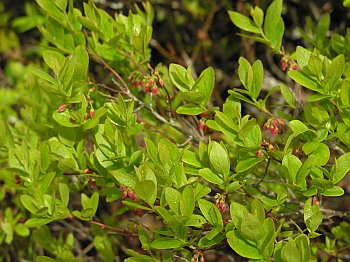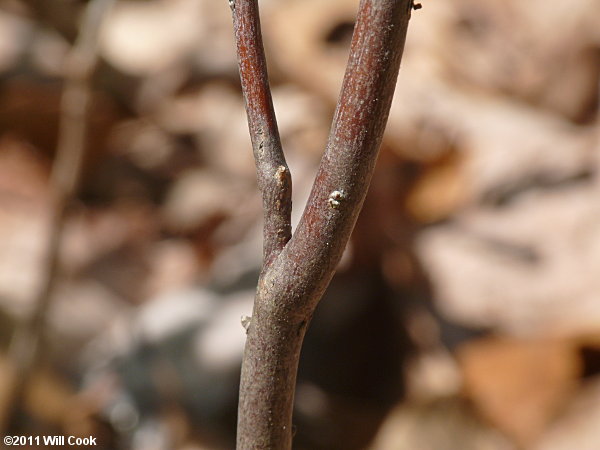
Black Huckleberry is a deciduous low, colonial shrub of dry, acidic slopes and rocky areas, often in the same areas as the somewhat similar Hillside Blueberry (Vaccinium pallidum). Huckleberries are closely related to blueberries (Vaccinium spp.), but have golden-colored resin glands on the leaves and only 10 seeds per berry (blueberries have more). In North Carolina, Black Huckleberry is common throughout the Mountain region, uncommon in the Piedmont, and occasional in the northern half of the Coastal Plain.
Black Huckleberry has golden-colored resin glands on both surfaces of the leaves, unlike several other similar species of Gaylussacia.
Montgomery Co., NC 4/17/2011.

Detail of the photo above, showing the golden-colored resin glands on both upper and lower leaf surfaces.
Montgomery Co., NC 4/17/2011.

Flowers are also covered with golden-colored resin glands.
Montgomery Co., NC 4/17/2011.



